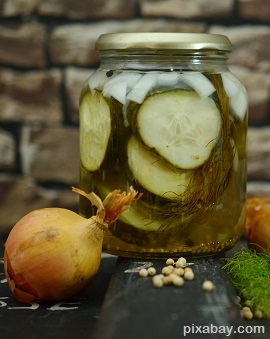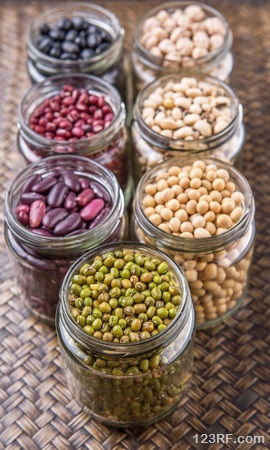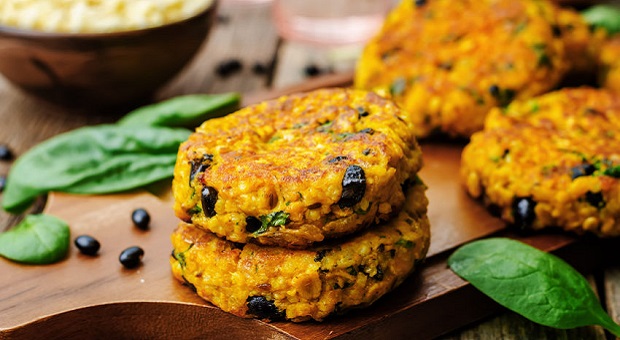Everywhere you look, people who are preparing for disaster are stocking up on beef jerky, canned meats, dried milk and powdered egg products. People are also stocking up on livestock when they can, even if it’s only a small flock of chickens to provide meat and eggs should disaster strike.
But what if you’re a vegetarian, especially a vegan? How should you go about prepping in order to meet post-disaster nutritional needs.
The good news is that you’re not going to need to do much more than other preppers. If you’re a lacto-ovo vegetarian, stockpiling will be even easier because you’ll still be able to meet your calcium and protein needs by stockpiling dried milk and eggs or by having a cow and some chickens.
If, however, you’re a vegetarian in the strictest sense of the word, you may need to invest a bit more effort.
Old Days. Old Ways. But The Food Never Tasted Better.
If you’re a vegan, you probably meet your vitamin B12 needs by eating tofu or drinking soy milk. Obviously this isn’t going to be an option is SHTF. If you live in soybean country, you’ll be in fine shape, but most of you may not be so lucky.
Stock up on multi-vitamins
This is actually a good idea for all of us because we never know when a disaster will strike that will damage our fresh vegetable crops. You seriously need to stock up on a good multi-vitamin. The reason that I suggest this is because if you’re dependent upon canned vegetables only, you’re not going to be getting enough of several vitamins, including calcium B6 and B12.
There are a couple of vegetable sources of vitamin B6 including sunflower seeds, pistachios, apricots, raisins and prunes, but you’d have to eat anywhere from a cup to 4 cups of them a day in order to meet your vitamin B6 needs. Not particularly realistic when you may need to ration food.
If you’re fortunate enough to live in a tropical area, bananas and avocados are good sources of vitamin b6, too.
Though you can get calcium from leafy green veggies, you don’t find very many good ones in a can and when you do, they’ve likely been so over processed that they’ve lost a considerable amount of their nutritional value.
Stock up on blackstrap molasses
This thick dark sweetener has an overpowering flavor until you get used to it, but it’s a great source of minerals. Just 1 tablespoon gives you almost 20% of your daily calcium. It also provides iron and other minerals. Plus, it really does taste good once you get used to it.
Beans and legumes
Believe it or not, beans are a decent source of calcium and also vitamin b6. One cup provides anywhere from 14-18 percent of your daily requirements. Throw some blackstrap molasses on your cornbread (if you’re lucky enough to have any) and you’ll be well on your way to meeting your daily nutrient requirement.
Can your own foods

A good rule of thumb with vegetables is that once they’re cooked to the point that they’re losing their bright colors, they’re also losing the enzymes and nutrients that make them so healthy.
That being said, you need to MAKE SURE that you process low-acid vegetables such as tomatoes, green beans and corn in a pressure canner in order to prevent botulism. If at any point you notice that your vegetables aren’t sealed or that they have bubbles or foam on top of them after they’re sealed, throw them away; that release of gas is a good indicator that your food has bacteria in it and isn’t safe to consume.
Protein

Now that we’ve touched on the dietary issues facing vegetarians and vegans, (and really, there weren’t that many), let’s talk a bit about why people choose the vegetarian lifestyle because that leads us into the next segment of this article.
People typically become vegetarians for one of two reasons, though they may do so for both reasons. The first reason that a person may decide to become a vegetarian is for health reasons. Fruits and vegetables are wonderful for you.
They provide you with all of the nutrients that you need without all of the saturated fats that come with eating meat. There are even some dietary vegetarians that include fish in their diets, so that makes getting protein and vitamins b6 and b12 a snap. Also, if a person is only a vegetarian for health reasons, they probably won’t mind eating a little bit of meat if necessary in order to survive.
Dietary vegetarians don’t always disapprove of not-dietary animal products such as leather or fur so staying warm for them in the winter if a long-term global disaster strikes.
The second reason that people become vegetarians is for moral reasons. They believe that it’s wrong to harm another living being regardless of whether it’s for food or for its skin. If this is the type of vegetarian that you are, you’re going to find life a bit more challenging in the face of global disaster.
If preparing for long-term survival, you should probably include several extra coats and pairs of shoes/boots in your stockpile because if things get really bad, all that’s going to be available for a while for shoe and coat making is going to be leather.
In order to meet the guidelines of your moral compass, which is something that everybody should do, think about the substitutions that you make the most and then decide if they’re going to be available in a post SHTF world. If not, stock up.
Prepping as a vegetarian isn’t really that much different that prepping is for anybody else; it’s just a matter of evaluating your dietary needs then stockpiling in order to meet them. You may need to make a few extra things yourself, including things like granola bars and soups, in order to ensure that your food is vegetarian, but you’re likely used to doing that anyway.
My only other suggestion is to carefully consider what you’ll need. If you’re dead set against wearing any kind of animal skin then you better stock up on what you already use to replace them.
This article has been written by Theresa Crouse for Survivopedia.





































































The American Indian definition of Vegetarian:……. “Bad Hunter”……..
I’ve been a vegan prepper for more then 7 years. Last year I grew 3,000 pounds of produce on a single acre. Easily. More then enough to feed my family three well balanced meals every day for a year. Also made $12,000 at the farmers market. You can at most raise 1 cows on an acre that’s with supplementing with hay and grain. For my family the choice is easy.
Wow! Tell me your ways. Thats impressive.
In my opinion, it’s much easier to handle a prepper’s food stored diet as a vegetarian – they’re used to blander tastes and unappealing consistencies 😛 No, all jesting aside, they’re used to being on a diet where their protein is derived from the exact kinds of foods that are best for long term food storage (e.g. beans, grains, etc.) Luckily there are survival food kits and food preparation methods tailored to all kinds of dietary needs/preferences at places like TopDogPreppers.com so you really don’t have to worry about piecing together your own food storage system.